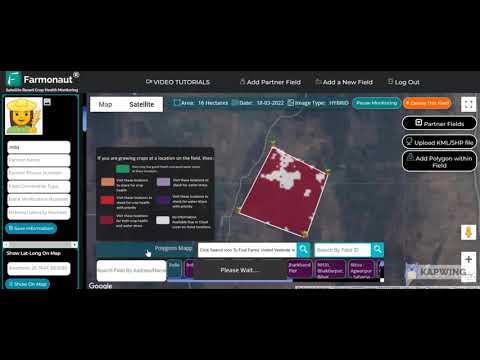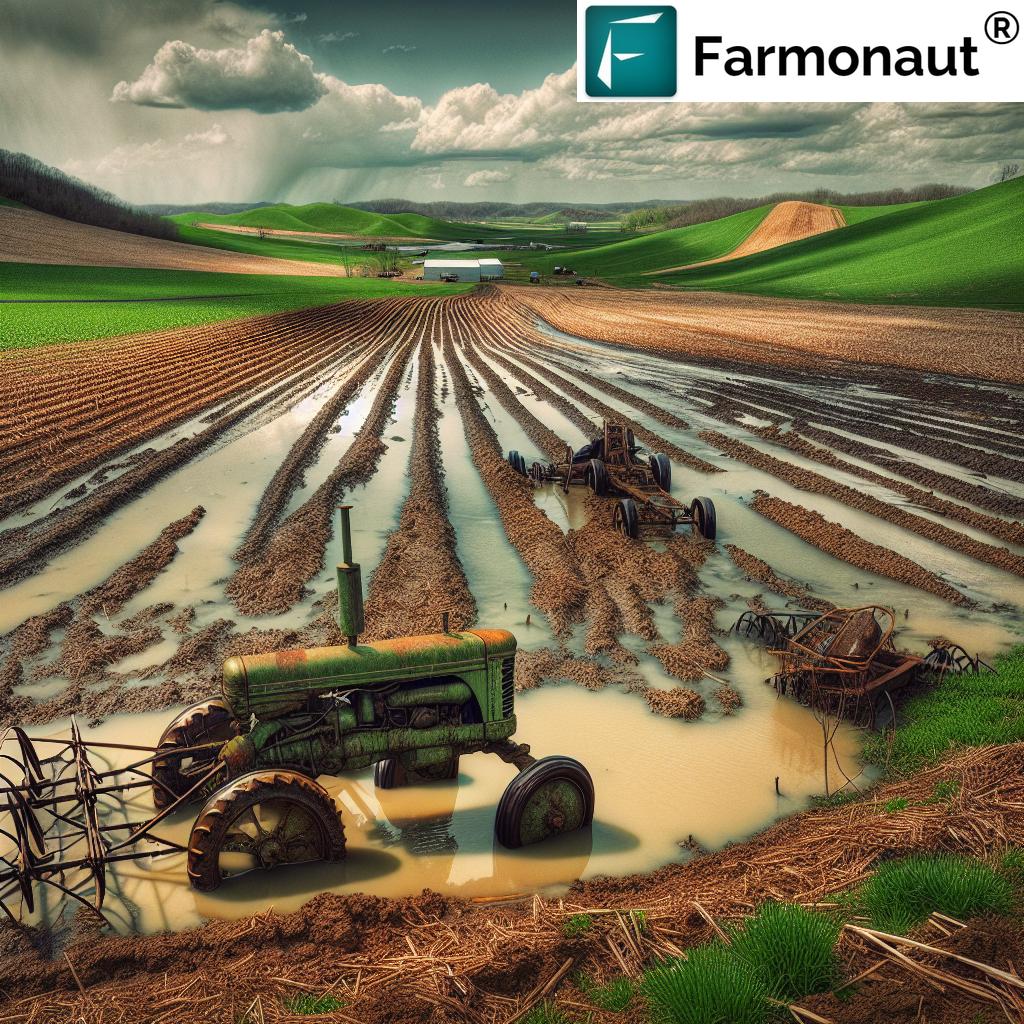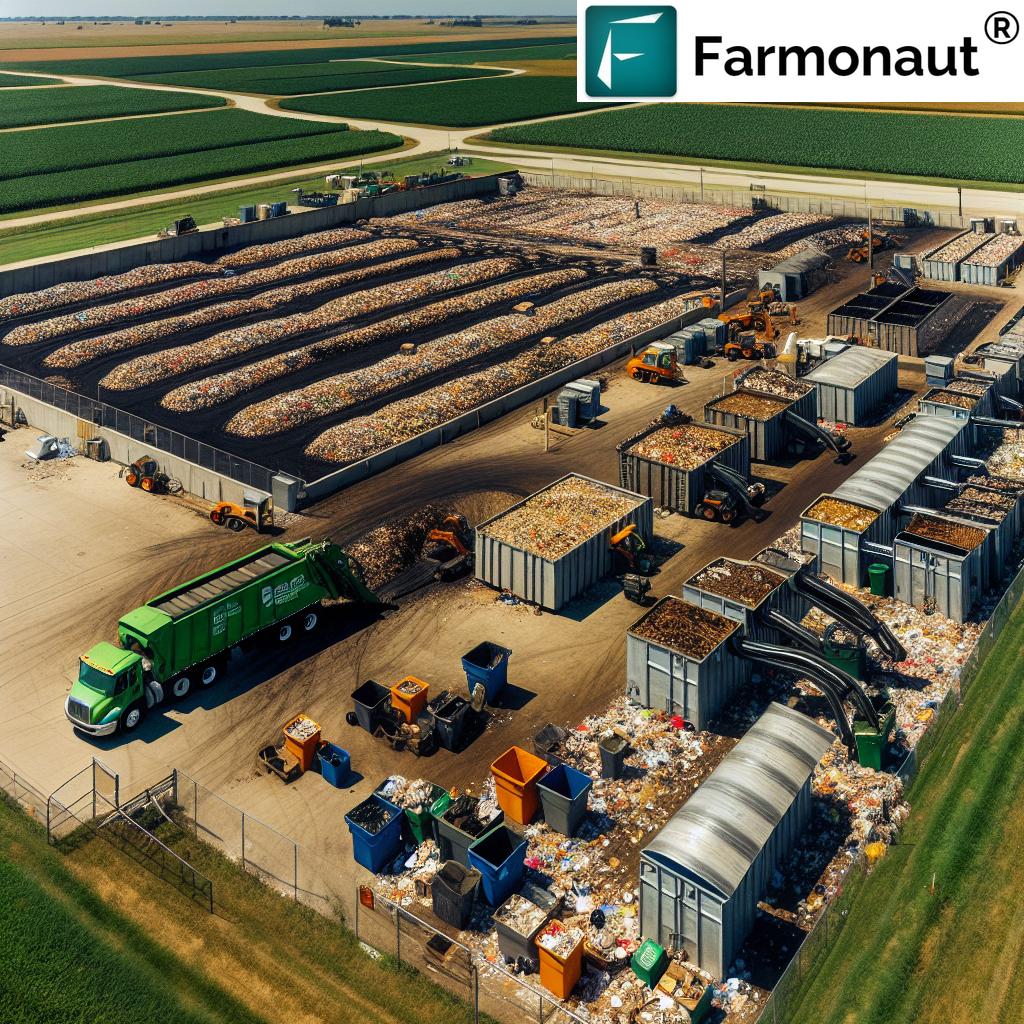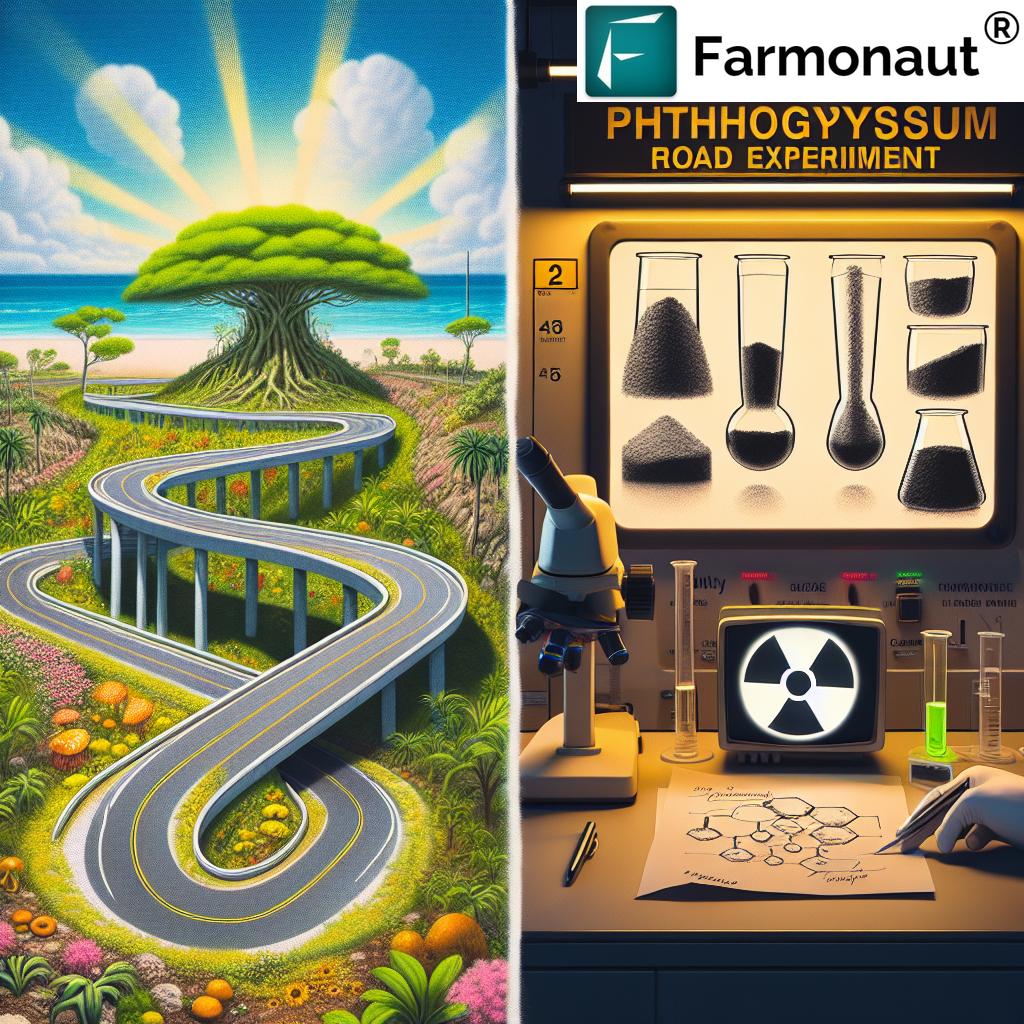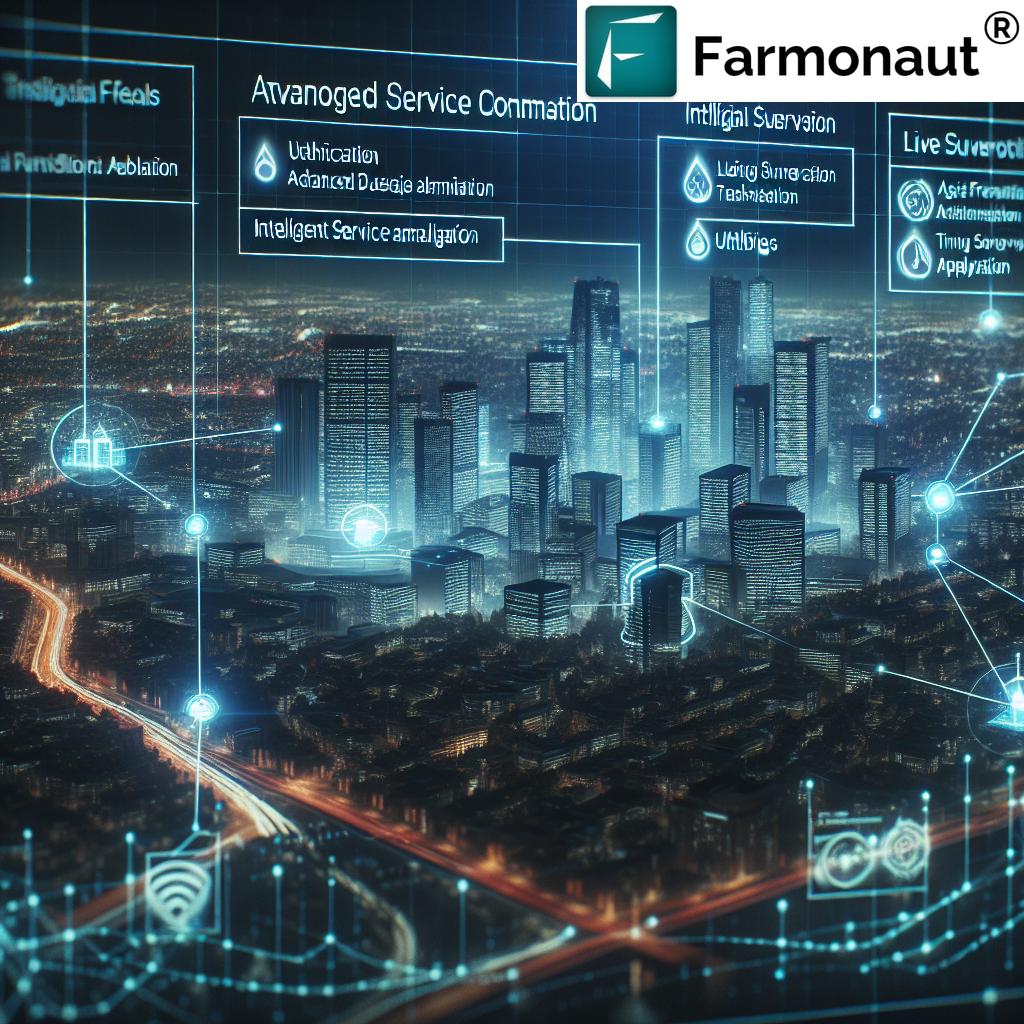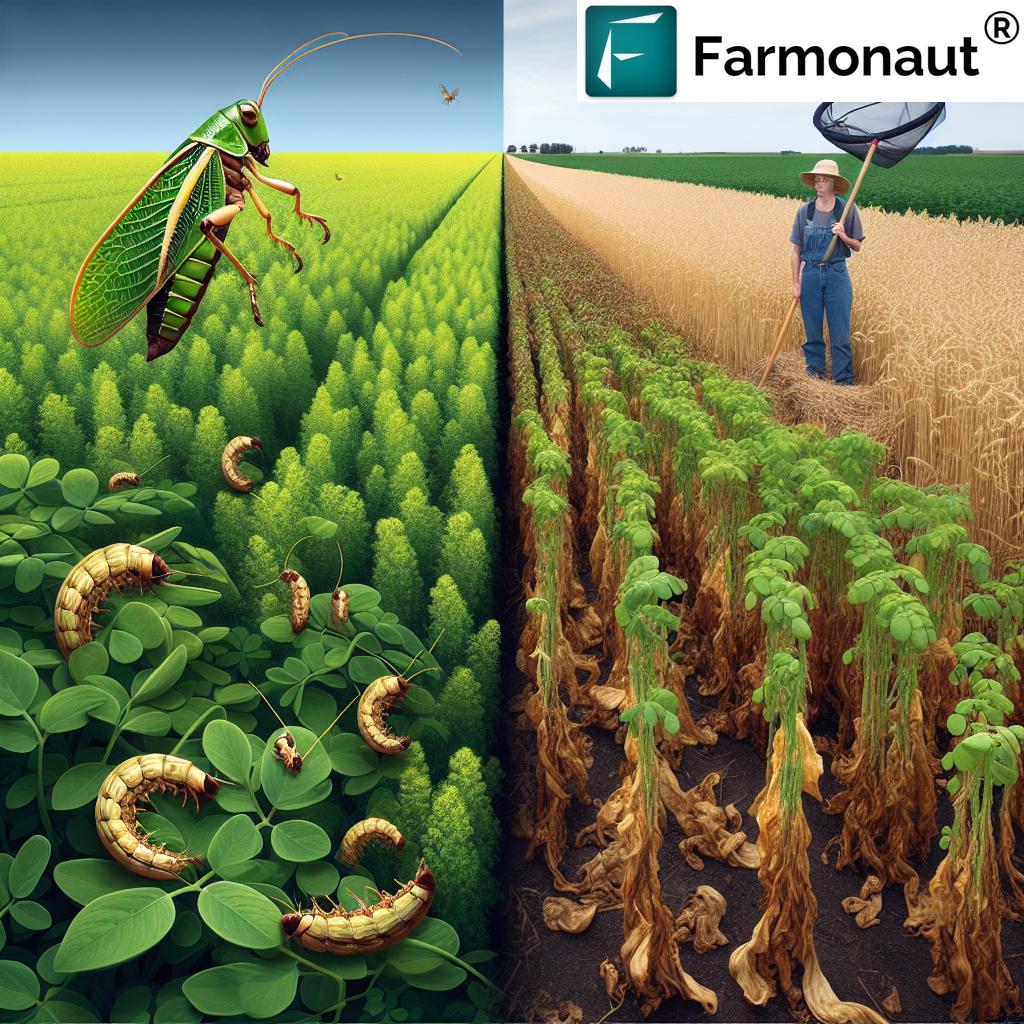Revolutionizing Agriculture: Unmanned Helicopters and Precision Spraying Technology in Texas
“Agricultural drones equipped with GPS, laser sensors, and night-vision cameras are transforming precision agriculture in Texas.”
Welcome to the future of farming! We’re witnessing a remarkable transformation in the agricultural landscape, particularly in the Lone Star State of Texas. As experts in agricultural technology and remote sensing, we at Farmonaut are excited to explore the groundbreaking advancements in unmanned helicopters and precision spraying technology that are revolutionizing the way we approach crop management and protection.
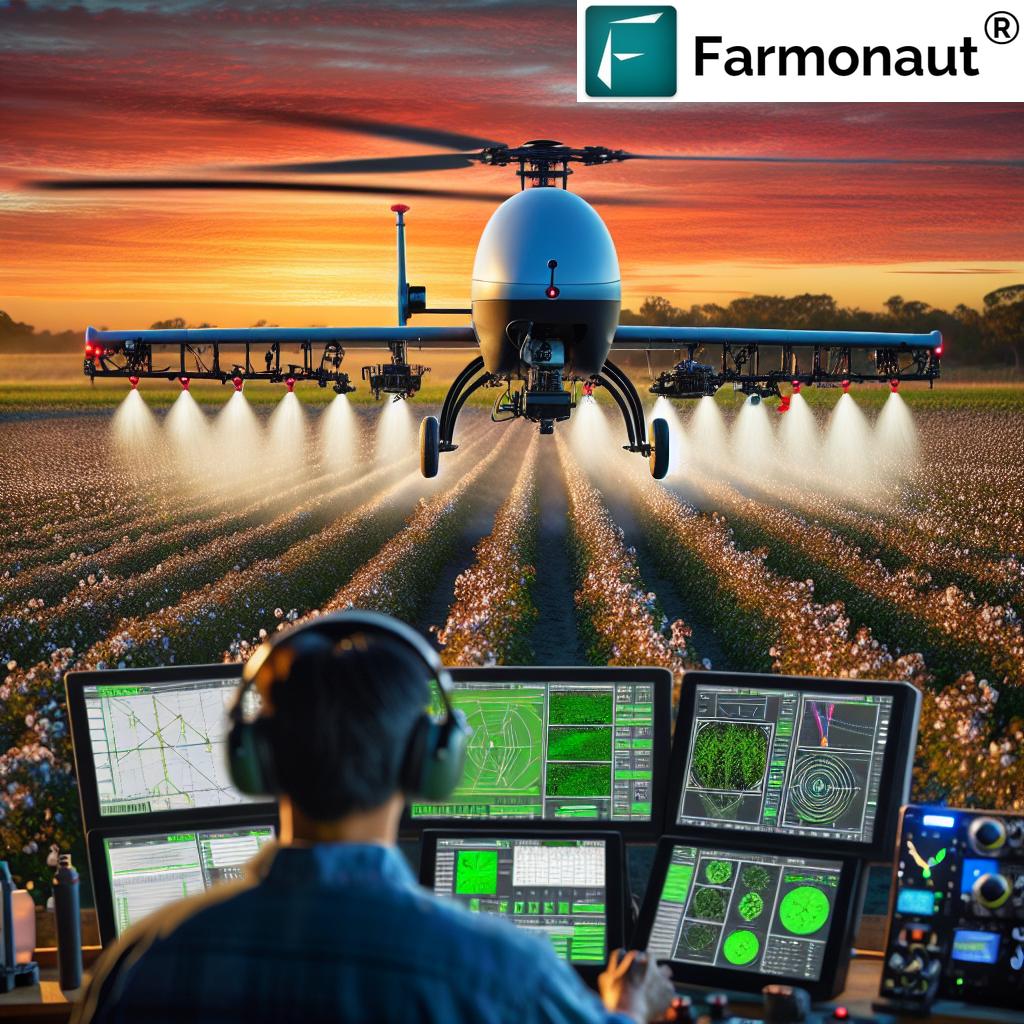
In this comprehensive blog post, we’ll delve into the cutting-edge world of autonomous agricultural drones and remote-controlled helicopters, exploring how these innovations are addressing long-standing challenges in the industry. From enhancing safety to improving efficiency and precision, these technological marvels are set to reshape the future of farming in Texas and beyond.
The Evolution of Agricultural Aviation
To truly appreciate the significance of this revolution, let’s take a brief journey through the history of agricultural aviation:
- Early 20th Century: The birth of crop dusting with primitive aircraft
- Mid-20th Century: Advancements in aircraft design and chemical formulations
- Late 20th Century: Introduction of GPS and computer-assisted spraying
- 21st Century: The dawn of unmanned aerial vehicles (UAVs) in agriculture
This evolution has led us to the current era of autonomous agricultural drones and unmanned helicopters, marking a significant leap in both technology and safety.
The Rise of Unmanned Helicopters in Texas Agriculture
Texas, with its vast agricultural lands and diverse crop types, has become a hotbed for innovative farming techniques. The introduction of unmanned helicopters for crop spraying is a game-changer in this arena. These aerial marvels combine the best of aerospace engineering with precision agriculture technology to offer unparalleled benefits to farmers across the state.
Key Features of Unmanned Agricultural Helicopters
- Advanced Navigation Systems: Equipped with GPS and laser sensors for precise positioning
- Night Vision Capabilities: Enabling safe and efficient night-time crop spraying
- Remote Control Systems: Allowing operators to manage flights from a safe distance
- High-Capacity Tanks: Capable of covering large areas in a single flight
- Precision Spraying Mechanisms: Ensuring accurate and uniform application of pesticides and fertilizers
These features collectively address many of the challenges faced by traditional crop dusting methods, particularly in terms of safety and efficiency.
The Sprayhawk: A Technological Marvel
One of the most promising developments in this field is the Sprayhawk, an unmanned helicopter developed by Rotor Technologies. Founded by Hector Xu, an MIT doctoral graduate, Rotor Technologies is at the forefront of this agricultural aviation revolution.
The Sprayhawk, based on the Robinson R44 helicopter, has been meticulously modified for remote operation. It incorporates:
- Advanced flight computers
- Sophisticated communications systems
- High-resolution cameras
- Cutting-edge laser-sensing technology
- Radar altimeters
- Precise GPS systems
These technological enhancements are specifically designed to improve night-time visibility and ensure safety in low-altitude flying conditions, addressing the primary concerns of traditional crop dusting operations.
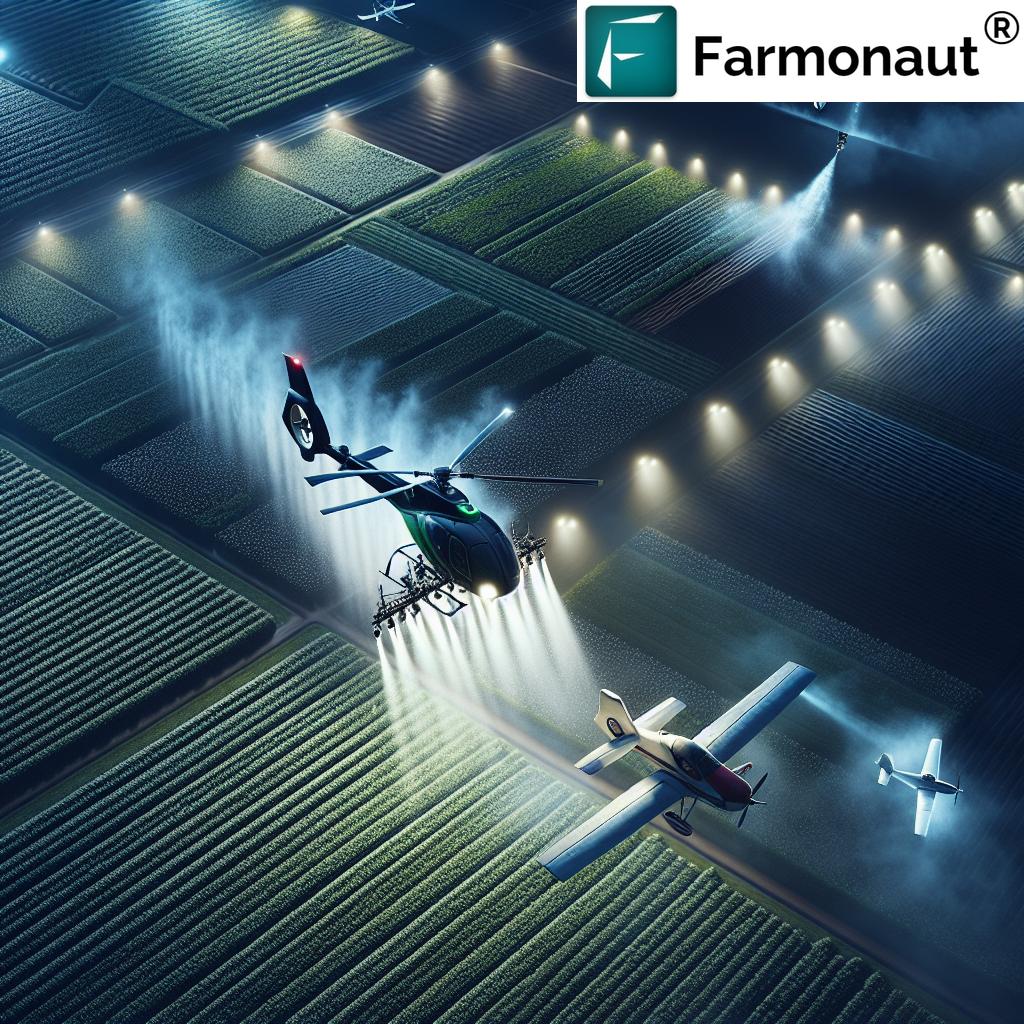
Safety: A Primary Concern Addressed
The agricultural aviation industry has long been plagued by safety concerns. Traditional crop dusting, involving manned aircraft flying at low altitudes and high speeds, has resulted in numerous accidents and fatalities over the years. Factors contributing to these risks include:
- Proximity to power lines and other obstacles
- Poor maintenance of aging aircraft
- Pilot fatigue due to long hours and stressful conditions
- Challenging terrain and unpredictable weather
Unmanned aerial spraying operations directly address these safety concerns by removing pilots from the most dangerous aspects of the job. The Sprayhawk and similar unmanned systems offer several safety advantages:
- Remote Operation: Pilots control the aircraft from a safe distance, eliminating personal risk
- Advanced Sensors: Better detection and avoidance of obstacles
- Fatigue Reduction: Less physical strain on operators
- Emergency Protocols: Built-in fail-safes for communication loss or system failures
These safety features not only protect human lives but also reduce the risk of costly accidents and equipment damage.
Precision Agriculture: Enhancing Efficiency and Yield
Beyond safety, unmanned helicopters are revolutionizing precision agriculture. The integration of advanced technology allows for more precise and efficient crop spraying, leading to numerous benefits:
- Targeted Application: Precise spraying reduces waste and environmental impact
- Variable Rate Technology: Adjusts application rates based on crop needs
- Data-Driven Decision Making: Integrates with farm management systems for optimized treatments
- Increased Coverage: Ability to spray larger areas more quickly than traditional methods
These advancements in precision agriculture technology not only improve crop yields but also contribute to more sustainable farming practices.
Regulatory Landscape and FAA Involvement
“The FAA is adapting regulations to accommodate the expanding agricultural drone market for unmanned aerial spraying operations.”
As with any new technology in aviation, the integration of unmanned helicopters into agricultural operations faces regulatory challenges. The Federal Aviation Administration (FAA) plays a crucial role in overseeing and approving these new systems. Key aspects of the regulatory landscape include:
- Development of new certification processes for unmanned agricultural aircraft
- Updating airspace regulations to accommodate both manned and unmanned operations
- Establishing safety standards specific to agricultural drone use
- Creating guidelines for operator training and licensing
Companies like Rotor Technologies are working closely with the FAA to navigate these regulatory waters, paving the way for wider adoption of unmanned aerial spraying technology.
Market Trends and Future Outlook
The agricultural drone market is experiencing rapid growth, driven by the increasing demand for precision farming solutions. In Texas, where agriculture plays a vital role in the state’s economy, the adoption of unmanned helicopters for crop spraying is expected to accelerate. Key market trends include:
- Growing investment in agritech startups focusing on autonomous aircraft
- Increased collaboration between aerospace and agricultural sectors
- Rising demand for larger, more capable unmanned spraying systems
- Expansion of services to include data collection and analysis
As the technology matures and regulatory frameworks solidify, we anticipate a significant shift towards unmanned systems in agricultural aviation across Texas and beyond.
Comparative Analysis: Traditional vs. Unmanned Spraying
To better understand the impact of this technological shift, let’s compare traditional crop dusting methods with unmanned helicopter spraying:
| Aspect | Traditional Crop Dusting | Unmanned Helicopter Spraying |
|---|---|---|
| Safety (risk level) | High | Low |
| Precision of application | Moderate | High (95% accuracy) |
| Efficiency (acres/hour) | ~100 acres | ~150 acres |
| Environmental impact | Moderate to High | Low |
| Cost-effectiveness | Moderate | High |
| Technology integration | Basic GPS | Advanced GPS, sensors, AI |
| Regulatory compliance | Established | Evolving |
| Night operation capability | Limited | Advanced |
| Terrain adaptability | Moderate | High |
| Operator skill requirements | High (piloting) | Moderate (remote operation) |
This comparison clearly illustrates the advantages of unmanned systems in terms of safety, precision, and efficiency.
The Role of Farmonaut in the Agricultural Revolution
As we witness this technological revolution in agricultural aviation, it’s important to note how companies like Farmonaut are contributing to the broader picture of precision agriculture. While not directly involved in unmanned aerial spraying, Farmonaut’s satellite-based farm management solutions complement these advancements by providing valuable data and insights to farmers.
Farmonaut’s platform offers:
- Real-time crop health monitoring
- AI-based advisory systems
- Blockchain-based traceability
- Resource management tools
These services, when combined with the precision spraying capabilities of unmanned helicopters, create a powerful ecosystem for modern, efficient farming.
For more information on Farmonaut’s innovative solutions, visit our web application or explore our API services.
Challenges and Considerations
While the future of unmanned helicopters in agriculture looks promising, there are still challenges to overcome:
- Air Traffic Management: Integrating unmanned aircraft into shared airspace
- Public Perception: Addressing concerns about privacy and noise
- Technical Reliability: Ensuring consistent performance in various conditions
- Initial Investment: High costs associated with adopting new technology
- Training and Skills Gap: Developing a workforce capable of operating these systems
Addressing these challenges will be crucial for the widespread adoption of unmanned aerial spraying technology in Texas and beyond.
The Impact on Texas Agriculture
The adoption of unmanned helicopters for precision spraying is set to have a significant impact on Texas agriculture:
- Increased Productivity: More efficient spraying leads to higher crop yields
- Cost Reduction: Lower operational costs over time
- Environmental Benefits: Reduced chemical usage and environmental impact
- Worker Safety: Decreased risk for agricultural workers
- Technological Leadership: Positioning Texas at the forefront of agricultural innovation
These benefits align well with Texas’s reputation for embracing cutting-edge agricultural practices and technologies.
The Future of Farming: Integration and Innovation
As we look to the future, the integration of unmanned helicopters with other advanced agricultural technologies promises to create a highly efficient and sustainable farming ecosystem. This includes:
- IoT Integration: Connecting spraying systems with soil sensors and weather stations
- AI-Driven Decision Making: Using machine learning to optimize spraying schedules and dosages
- Robotics Synergy: Combining aerial spraying with ground-based autonomous vehicles
- Data-Driven Agriculture: Leveraging big data for predictive farming practices
These integrations will further enhance the precision and effectiveness of agricultural operations in Texas and beyond.
Educational and Training Initiatives
To support the growth of this new technology, educational institutions and industry partners in Texas are developing programs to train the next generation of agricultural aviation professionals. These initiatives include:
- Specialized courses in unmanned aerial systems at Texas colleges and universities
- Industry-sponsored training programs for farmers and agricultural workers
- Partnerships between aerospace engineering departments and agricultural schools
- Hands-on workshops and demonstrations at agricultural expos and trade shows
These educational efforts are crucial for building a skilled workforce capable of operating and maintaining advanced agricultural aviation systems.
Economic Implications for Texas
The adoption of unmanned helicopters and precision spraying technology is expected to have significant economic implications for Texas:
- Job Creation: New roles in technology, maintenance, and operation of unmanned systems
- Agricultural Exports: Increased crop yields leading to higher export volumes
- Technological Innovation: Attracting tech companies and startups to the state
- Investment Opportunities: Growing interest from venture capital in agritech innovations
These economic benefits underscore the importance of supporting and accelerating the adoption of these technologies across the state.
Global Context and Texas’s Leadership
Texas’s adoption of unmanned helicopters for agricultural spraying places the state at the forefront of a global trend. Other countries, such as Japan and Brazil, have already made significant strides in this area. Texas has the opportunity to:
- Become a leader in developing best practices for unmanned aerial spraying
- Export technology and expertise to other agricultural regions worldwide
- Contribute to global food security through increased agricultural efficiency
- Set standards for safety and regulatory frameworks in agricultural aviation
By embracing this technology, Texas can solidify its position as a global agricultural powerhouse.
Environmental Considerations
The environmental impact of agricultural practices is a growing concern, and unmanned helicopter spraying offers several benefits in this regard:
- Reduced Chemical Usage: Precision application minimizes overspray and waste
- Lower Carbon Footprint: More efficient operations result in reduced fuel consumption
- Habitat Protection: Ability to avoid sensitive areas more easily than traditional methods
- Water Conservation: Precise application can lead to more efficient water use in crop management
These environmental benefits align well with Texas’s commitment to sustainable agricultural practices.
The Role of Data in Precision Agriculture
The success of unmanned aerial spraying is closely tied to the collection and analysis of agricultural data. This is where platforms like Farmonaut play a crucial role. By integrating satellite imagery, weather data, and on-ground sensors, farmers can make more informed decisions about when and where to apply treatments.
Key aspects of data-driven agriculture include:
- Real-time crop health monitoring
- Predictive analytics for pest and disease management
- Optimization of resource allocation based on field-specific data
- Long-term trend analysis for improved crop planning
For more information on how Farmonaut’s data solutions can complement unmanned spraying operations, check out our API Developer Docs.
Conclusion: A New Era for Texas Agriculture
The integration of unmanned helicopters and precision spraying technology marks the beginning of a new era for agriculture in Texas. This revolution promises to enhance safety, improve efficiency, and promote sustainable farming practices across the state. As we move forward, the collaboration between technology providers, farmers, regulators, and educational institutions will be crucial in realizing the full potential of these innovations.
At Farmonaut, we’re excited to be part of this agricultural revolution, providing the data and insights that complement these advanced spraying technologies. Together, we’re building a more efficient, sustainable, and productive future for farming in Texas and beyond.
To learn more about how Farmonaut can support your farming operations, visit our website or download our mobile apps:
FAQs
- Q: Are unmanned helicopters safe for agricultural use?
A: Yes, unmanned helicopters are designed with multiple safety features and remove the risk to human pilots, making them safer than traditional crop dusting methods. - Q: How do unmanned helicopters improve precision in crop spraying?
A: They use advanced GPS, sensors, and computer-controlled spraying systems to ensure precise application of chemicals, reducing waste and improving efficiency. - Q: What regulations govern the use of unmanned helicopters in agriculture?
A: The FAA is currently developing specific regulations for unmanned aerial spraying operations, working closely with industry leaders to ensure safety and efficiency. - Q: How does this technology benefit farmers economically?
A: While initial investment may be high, unmanned helicopters can lead to significant cost savings through reduced chemical usage, improved crop yields, and lower operational costs over time. - Q: Can unmanned helicopters operate at night?
A: Yes, many unmanned helicopters are equipped with night vision and other sensors that allow for safe and efficient night-time operations.




